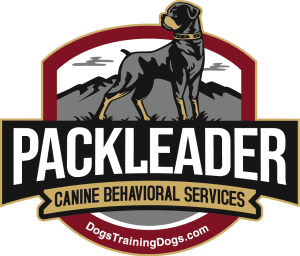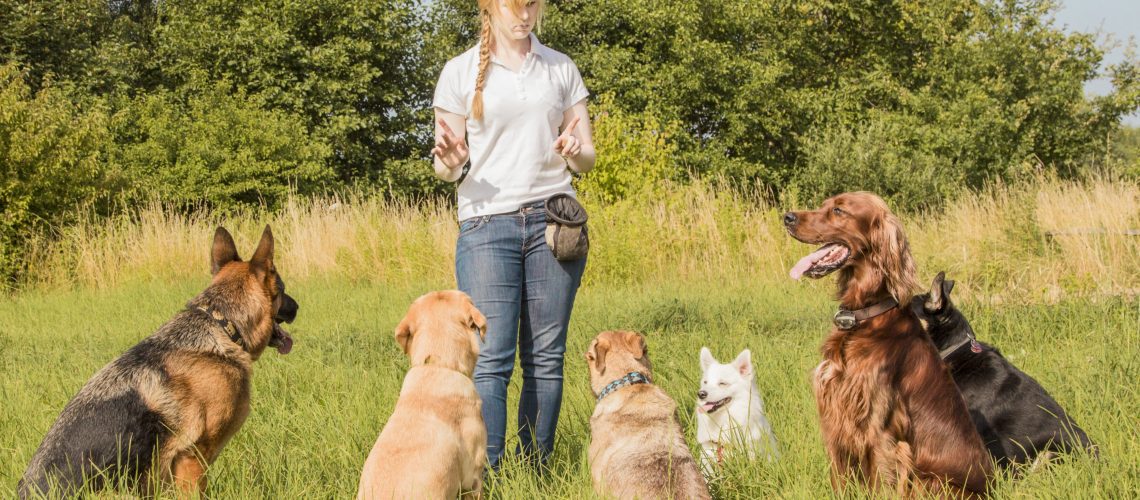In my 25+ years working with both behaviorally balanced as well as imbalanced dogs (and people who work with dogs)…one thing has become abundantly clear to me. While dogs “love” their dog lovers…they actually “follow” the dog leaders.
Caveat: While I believe that ALL dogs can greatly benefit from calm, confident and consistent Leadership, I also understand that not all dogs will require a strong Leader. This information is mostly geared towards new dogs owners as well as owners of behaviorally challenged dogs.
Through my countless experiences with dogs, both in my personal and professional life, one thing I’ve observed consistently over time is when a behaviorally balanced dog is given the choice between a dog lover and a dog leader…with both humans having the same level of exposure to the dog…the dog will naturally gravitate towards the dog Leader.
Here’s an observation that I experience regularly in my work, that helps formulate my opinion on this topic:
- In my many years working with dogs, truly the most successful way I have found to help improve any behavioral issue is by having the dog come stay with me, at my home along with my Pack of experienced, well-balanced dogs, for weeks in one of our specialized Board & Train Programs. Upon completion here of the Board & Train portion of the Program training, I bring the behaviorally improved dog(s) back to their home to conduct our Re-Home Session. This 3-hour Session is designed to teach the owners what their dog has learned, have them observe the changes in their dog and to teach them (the humans) what they’ll need to do going forward to help keep their dog maintain this new and improved state of behavioral balance that is now clearly evident to the owners.
Throughout this Session, the dog (almost) ALWAYS gravitates to me as opposed to the owners. Even after I re-introduce the dog to the owners…he or she will then hover near me, constantly looking towards me for guidance and feedback.
With the owner family sitting around the kitchen table listening to me discuss their dog and training results with them, I often ask the family…”who does the dog respect the most?” The family members look to Dad at the head of the table, and point to him. I look at Dad and he says…”I don’t even really like the damn dog!” Point taken. Then I ask…”who does the dog respect the least?” The family looks to the 8 yr old daughter Suzy who says…”but I love him and he sleeps in my bed!” Another point taken. If this dialogue occurred only once or twice…I would not put much weight into it. But…this exact dialogue takes place in almost all of the cases I work.
Why does the dog almost always respect the person who provides them with the lowest level of Affection in the entire family but yet will regularly “disrespect” (no command compliance, jumping up, stealing food, etc.) the family members who appear to be the “nicest” to the dog or the most Affectionate or “loving”?
I’m sure there’s more than one single “reason” for this but in my experience, I believe that the majority dogs see Affection as a sign of weakness. How do I come to believe this? Well, mostly through my 25+ years of observing groups of dogs interacting with each other. Whether it’s shelter dogs in a yard socializing and playing or owned dogs at a dog park or even my own Pack of 14 dogs…watching these dogs interact as often as I have, you can begin to pick up on behavioral patterns that end up being highly predictable.
Here’s an example of what I’ve seen to lead me in to this belief:.
- Let’s say we put 10 dogs into a yard that do not know each other well. On one side of the yard, a few dogs seem congregate together with lots of tail wagging, rolling over on their backs, soft ears that are often back, licking the face and lips of each other…basically being very affectionate to each other. In dog world, we’d call these the “submissives”.
- Throughout the yard, you can also see individual dogs, mostly keeping to themselves. They appear to be more “stiff”. Their tails are often erect or perked. Their ears are forward and they are “hard-staring” at the other dogs. If another dog ventures too close into their “space”…a conflict will often result. We call these dogs the “dominants”.
- When the two different “energies” meet…we often observe the Submissive dog showing great deference to the Dominant dog. Averting eye contact, offering a submissive “roll”, licking at the muzzle of the dominant while the dominant asserts his “control” by pulling his muzzle away as its being licked, sometimes mounting or even “pinning” the other dog. This almost always ends up without an altercation and with the both dogs reinforcing and validating their roles in the Pack dynamic. This is healthy and keeps the Pack cohesive.
Without these regular, natural interactions, and without a clearly defined Leader…the yard (and life) can become rife with chaos and behavioral imbalance.
Now, in this group after making these observations…I ask you this:
- Which of these two groups is most likely able to control Territory in the yard?
- Which of these two groups is more likely to control Resources in the yard?
- Which of these two groups is more likely to provide Safety/Security for the others?
- Which of these two groups is most likely to Lead the Pack on a hike?
- Do the Dominants look to the Submissives for guidance and feedback?
Obviously, we are not suggesting that owners try to emulate the behaviors of dominant dogs with their dogs. Please, no mounting! But, what should be gleaned from this is that most dogs will feel much safer, will be more compliant, less likely to “mis-behave” and lead an overall better life…when they are in the presence of a Dog Leader.
Once you’ve taken the time to establish yourself as your dogs Leader…it is then “safe” to show your dog the Lover side of you as well, without the potential “side effects” of your dog seeing you as the Lover ONLY. We have a saying…Leaders can become Lovers, but Lovers find it difficult to become Leaders.
There’s a reason why it’s not recommended for parents to try and rehabilitate their own children (alcohol, drugs, etc.). Or why it’s recommended not to pick up a baby every time it cries. Or why Special Ed teachers are taught not to be too emotional with their students.
What all this says that if you are entering into a new relationship with a new dog…whether its a Rescue Dog with some issues or a brand new puppy…the absolute BEST thing you can do for that dog is to convince him or her that you will be the Calm, Confident and Consistent Leader the dogs needs to thrive. Sure, some dogs don’t require strong Leadership…but some people can smoke cigarettes until their 90…or some people can drive sports cars real fast without ever wearing a seatbelt…or, you can drive all your life without ever putting insurance on your car. But…I ask., are these smart, educated decisions designed to avoid potential for dangerous “pitfalls” in the future….obviously the answer is NO.
So, while I am NOT suggesting that owners withhold all Affection from their dogs…quite to the contrary – I’m suggesting that owners FIRST convince their dog(s) they are the Leader (and all that entails) and once the dogs behavior around all regularly encountered stimulus (like other dogs and humans) are clearly balanced and predictable…it is then a better time to start showing your softer side!
The following excerpt was written by Steven R. Lindsay, MA. Steven is a dog behavior consultant and trainer in Newtown Square, Pennsylvania, He provides a variety of professional consulting and training services. In addition to his long career working with companion dogs, Steven previously trained military working dogs.
The Leader-Follower Bond
“A dog’s ability and readiness to properly meet the demands of domestic life is only half provided by its biological predisposition (Nature) – the other half is realized by the effects of socialization and training (Nurture). Without the guidance of a calm, assertive and effective Leader, a dog’s social adjustment and ability to respond well to an owner may suffer irreparable damage.
A calm, consistent and assertive owner can assist in guiding a dog’s choices until it is properly socialized and trained to make the correct and “balanced” choices on its own. In order to accept our Leadership, a dog must adopt a submissive and cooperative attitude at a very early stage of development and remain that way for the rest of its life.
In order to obtain true Leadership status, one must establish social limits (not permitting dogs to jump up, bite hands/mouthing, not pull on leash, etc.), maintain personal space limits, and develop a cooperative relationship based on gentle and positive compliance training and be able to apply corrective measures when necessary. As a result of these efforts, the dog will naturally become increasingly affectionate and cooperative. Once basic social boundaries are established, other behavioral objectives are rapidly achieved by presenting or omitting rewards, such as affection, food, play and other activities or resources that the dog may desire to obtain.”
- Steven R. Lindsay, Handbook of Applied Dog Behavior and Training

